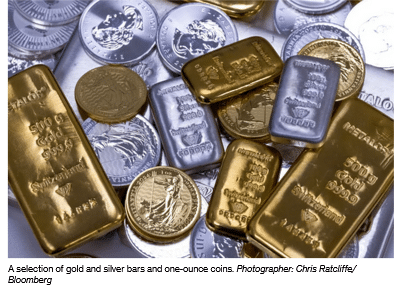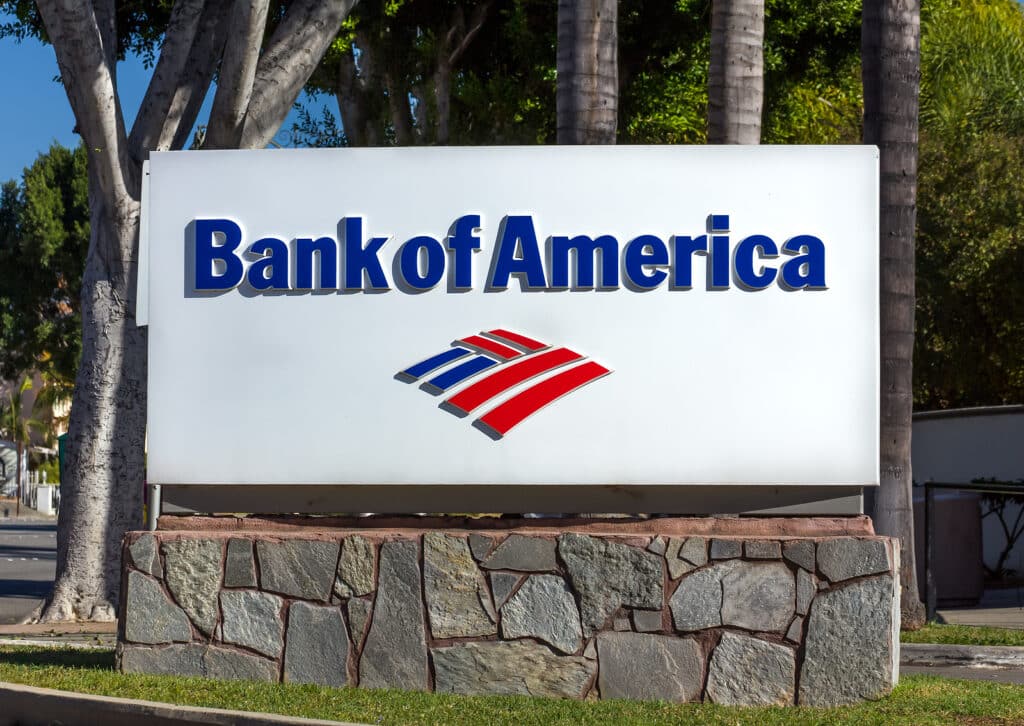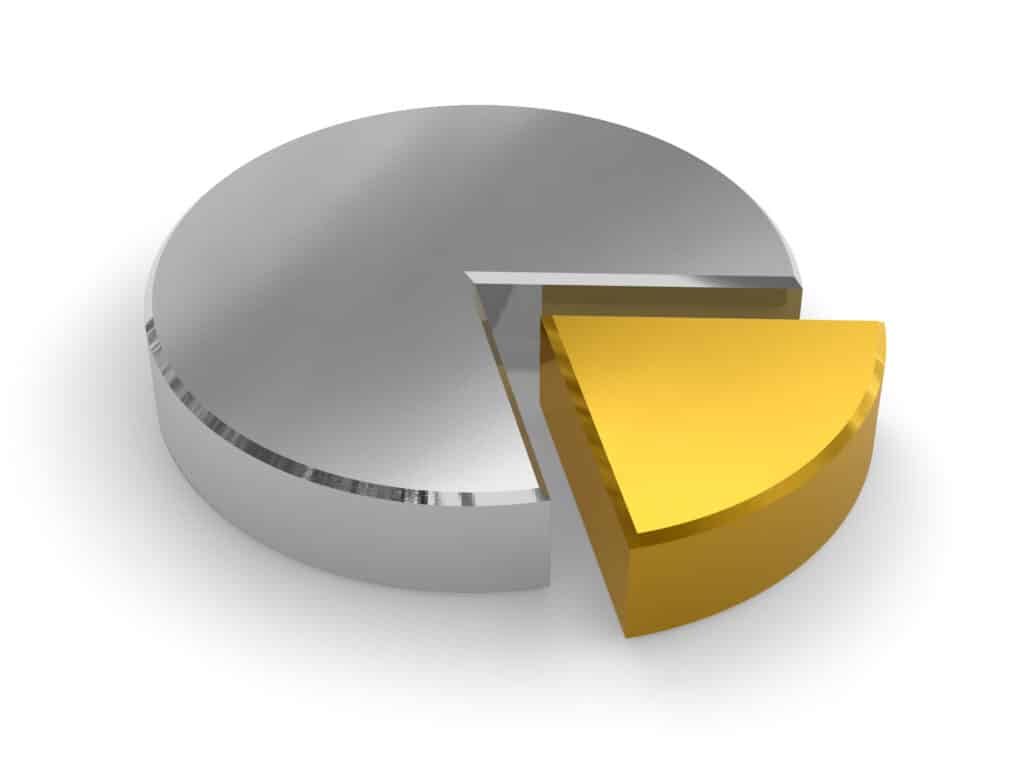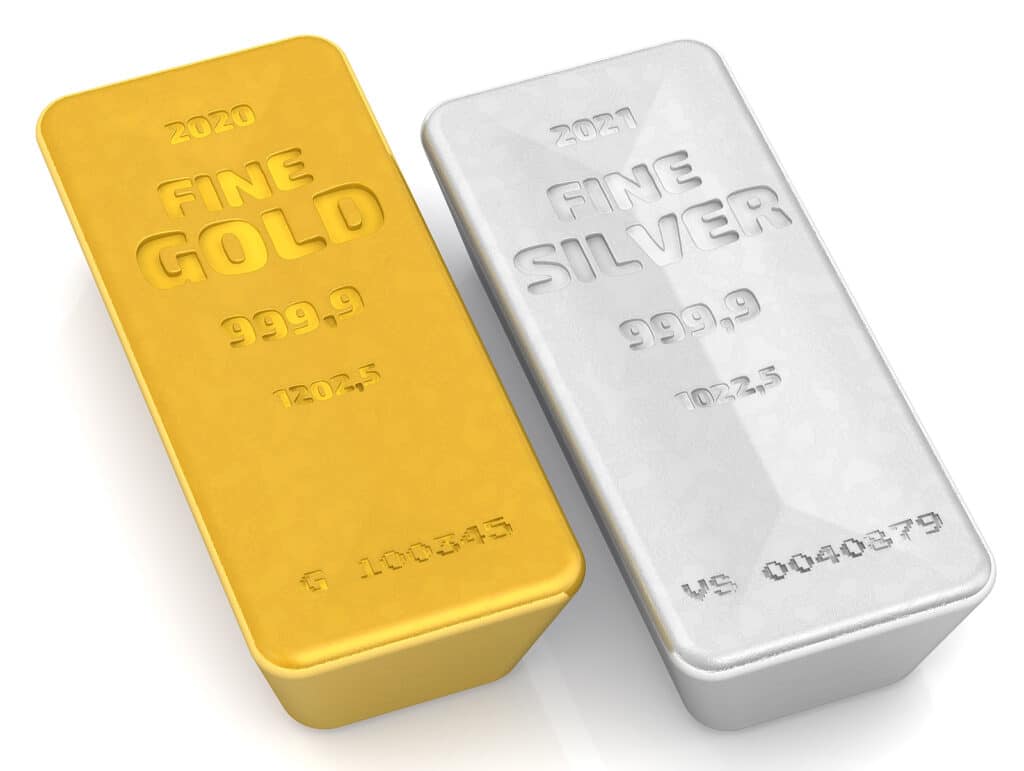Today on the Big Take: Gold thrives in times of uncertainty. But the scale and the speed of today’s rally exposes deeper concerns about the global economy.

Gold always shines during uncertain times, but escalating tensions between the US and China and signals from the Federal Reserve that we could see at least one more rate cut this year have propelled gold – and silver – to record highs.
Today on the Big Take, Bloomberg precious metals reporter Jack Ryan and host Sarah Holder talk about what’s pushing up gold’s value — and what history can teach us about how this gold rush could end.
Here is a lightly edited transcript of the conversation:
Dave Packer: How high can gold go?
Sarah Holder: Gold has been on a record setting run lately…
Tom MacKenzie: Look at that. Gold up nine tenths of a percent. The gains keep coming for gold.
Denise Pellegrini: If I check right now, gold is at a record $4,202 an ounce.
Holder: The commodity broke $4,200 an ounce on Wednesday – the latest high in a gold rush of historic proportions.
Jack Ryan: This has been an incredible year for gold.
Holder: That’s Jack Ryan, Bloomberg’s commodities and precious metals reporter.
Ryan: If we were to end the year now, it would be the best year since 1979. It’s up by about 55% this year.
Holder: This incredible year for gold – has also been an incredible year for some other shiny commodities.
Ryan: I mean, gold is actually, in one sense, the weakest performer of them. Platinum’s up by about 80% silver by about 75%. So all of the precious metals are moving higher this year, and there’s a lot of reasons behind that.
Holder: Jack says – all this interest in precious metals is a sign of our uncertain times.
Ryan: Gold I think often operates as a barometer for geopolitical tension or what’s happening in the global financial system. So watching the gold price can actually be quite a useful tool to kind of take the pulse of what’s happening in the world at that particular moment.
Holder: People have long rushed to buy gold when the economy seems weak or unstable. But the scale and the speed of this gold rally is different. Just when the pace of growth looked to be slowing down last week, it started up again, amid escalating US-China tensions over tariffs – and a signal from US Federal Reserve chair Jerome Powell that at least one more rate cut could be coming this year. And while some high-profile voices in the financial world are sympathetic to the turn toward gold, like JP Morgan Chase CEO Jamie Dimon…
Jamie Dimon : This is one of the few times in my life it’s semi-rational to have some in your portfolio.
Holder: It’s also raising alarm bells for some investors… like Ken Griffin, CEO of the global investment firm Citadel.
Ken Griffin: …as you see central banks around the world, as you see individual investors around the world go, you know what? I now view gold as a safe harbor asset in a way that the dollar used to be viewed. That’s what’s really concerning to me…
Holder: Jack says that the gold rush… and the debate around it… reflect something deeper about the way investors are thinking about the economy — and the world — right now.
Ryan: Holding the currencies even, not even just the debt of a foreign country is an implicit expression of trust in those countries. And when you maybe trust them less, an asset that doesn’t have any counterparty might become more appealing. And that really, I think if you boil it down, has been the thing that’s really supported gold.
Holder: I’m Sarah Holder, and this is the Big Take from Bloomberg News. Today on the show: What’s behind gold — and silver’s — record smashing runs. And what can history teach us about how this gold rush could end.
Holder: If there’s one thing you should know about gold – it’s that it thrives in a crisis.
Ryan: Gold broke a thousand dollars as Bear Stearns was kind of collapsing in 2008. And $2000, a few months after the start of the pandemic.
Holder: That’s Jack Ryan, who covers precious metals for Bloomberg.
Ryan: $3,000 earlier this year. You could say it was the kind of trade war that was expanding, Liberation Day was just coming up. And so now you look at when it crossed the threshold of $4,000, what’s been happening in the world?
Holder: Geopolitical tensions, trade wars, high inflation. It’s been crisis after crisis – and all the bad news has been good news for gold.
Ryan: When you talk to investors and people in the market, a key turning point for the gold market seems to have been when Russia’s assets, foreign exchange assets, were frozen.
Holder: That was in 2022, at the beginning of Russia’s invasion of Ukraine.
Ryan: And those were treasuries, those were assets denominated in dollars, in pounds, in yen, G-7 currencies. And that, I think, was a key moment for central banks around the world. Because they looked at that and they realized that, if they came into conflict with the west at some point in the future, they could potentially lose access to the reserves, presumably at the time when they would actually need it the most. Gold, on the other hand, as long as you start within your own borders, it can’t be frozen, it can’t be taken from you. And so from that point on, buying of gold by central banks roughly doubled from about 500 tons a year before that to about a thousand tons a year now.
Holder: Jack says, the central banks that have been building up their gold reserves the most aggressively have a few things in common.
Ryan: China being a really important buyer – probably the most important buyer. India has also been adding to its reserves. And Eastern Europe as well. So Poland, Serbia, the Czech Republic, they’ve all been buying quite a lot of gold. It’s countries who are not part of the post-second World War Bretton Woods system, a global monetary order underpinned by gold. These are countries that didn’t take part in that but are, are now large economies. And they’re building gold reserves that are beginning to be commensurate with the kind of massive holds that were built up by the United States, France, Switzerland, Italy, other countries like that.
Holder: But it’s not just central banks that are seeing the appeal of gold right now. Other investors are flocking to gold as the Trump administration ratchets up pressure on the US Federal Reserve.
Ryan: One important one has been some of the attacks on the independence or perceived independence of the Federal Reserve. The efforts to fire one of the governors, Lisa Cook, that I think has been a really key kind of source of support for gold because if you had a pliant Federal Reserve, it sets up this kind of possible goldilocks situation.
Holder: Lisa Cook is fighting Trump’s attempt to remove her and the Supreme Court will hear the case early next year. In the meantime, Fed chair Jerome Powell has been firm that the Federal Reserve retains its independence. But a weakening labor market has pushed the Fed to start cutting interest rates: In September, it lowered them by a quarter percentage point and this week, Powell suggested another rate cut could be coming at the end of October. And that means gold could start looking a lot better for investors who might otherwise want to earn interest on their cash or on bonds.
Ryan: Your cash in the bank becomes less appealing and treasuries become less appealing and non yield in gold becomes more attractive.
Holder: So it’s a Goldilocks situation for gold, no pun intended, as you said.
Ryan: Possibly. Yeah.
Holder: Meanwhile, these factors – and some others — have also been driving up the price of gold’s notoriously volatile cousin: Silver.
Ryan: Often if gold moves one way, silver will move twice as far the same direction. And I mean, it’s done something similar to that this year. And for silver, there’s kind of diverse use cases. I mean, gold is used either in jewelry or it’s used essentially just as an investment asset. Whereas silver has quite a sizable chunk of annual silver supply goes into industrial applications: photovoltaic solar cells. That’s a growing source of demand. And so for the last couple of years, the market has been in deficit. There is a lot of silver in vaults around the world. So the world isn’t going to imminently run out of silver. But you have that deficit situation, and then on top of that investors are looking at the volume of debt that’s held by some western European countries, the United States, wondering about how that can be resolved. And so they’re looking at the risk of currency debasement and how they can hedge against that. And they think maybe cryptocurrencies, maybe precious metals, maybe real estate, maybe these are kind of assets that we can hedge against this risk.
Holder: With all of this rush to “buy gold,” it’s worth noting: buying a commodity like gold or silver looks pretty different from buying a US treasury bond… or a share of a stock on the S&P.
Ryan: There’s many ways to do it and you can kind of scale based on maybe how paranoid you are about, or paranoid or concerned about whether or not you’ll be able to get access to your investment. You can buy a small bar or a coin from a bullion dealer. There’s probably a visceral appeal just to having, gold coins under your bed or something like that.
Holder: For investors who don’t need to stash their doubloons under their mattress, Jack says another route is trading gold futures or buying gold-backed stable-coins. Other investors are buying precious metals through exchange traded funds. These gold – or silver – backed ETFs give an investor a share of the commodities they hold.
Ryan: That’s an easy, straightforward, relatively low cost way to get exposure to gold and silver, and it’s very popular.
Holder: OK, so there’s both tangible and intangible ways to invest. I’m wondering, are there examples of how this run on the metals market is creating logistical craziness in the physical world?
Ryan: It’s funny, at the start of the year, investors were concerned about the possibility that gold, silver, these various other precious metals would be tariffed. And because of that, prices in the US started creeping higher as people exited their shorts. And that led to this great arbitrage situation where you could buy gold in London for cheaper and sell it in New York for more. And in order to do that, you had to fly the stuff over, so typically with gold, you’ll store it in the hold of a passenger flight. So probably if you fly New York-London, it’s quite possible that underneath your seat — you won’t be aware of it for security reasons — but there is gold.
Holder: As of September, President Trump has said that gold, at least, was not going to be subject to tariffs. But because of the massive outflow of precious metals during that uneasy period, London is still short on silver.
Ryan: Now we’re seeing a big premium actually for silver in London and some of that metal that traders went a massive effort to get to New York. They’re now flying it back to London because the arbitrage now works the other way. You can buy it for less in New York and sell it for more in London.
Holder: Wow. So they’re basically saying, turn this flight around. We gotta get that silver back to London.
Ryan: Absolutely.
Holder: After the break – what we can learn from the last time the value of gold spiked by historic proportions – and what bears and bulls are saying about where precious metal prices go from here.
Holder: Gold is officially more valuable than ever. But Bloomberg precious metals reporter Jack Ryan says it’s not the first time a gold rush made history.
Ryan: So these are good times for gold. But the best times for gold was the 1970s.
Holder: Up until then, anyone who held US dollars could, in theory, trade them in for gold. But at the start of the 70s, President Richard Nixon ended the gold standard. Dollar prices floated freely. And the price of gold started to rise.
Ryan: Throughout the 1970s, in a lot of western economies, particularly in the US you had stagflation, you had weak growth and high inflation. And gold ripped through that period, particularly as you got to the latter stage of that decade and you had the oil crisis, really sky high inflation, Vietnam, lots of government borrowing in order to pay for that. And throughout that period, historians and scholars will tell you that Nixon was putting pressure on the Fed. He was putting pressure on the chair, Arthur Burns to keep interest rates lower than perhaps they should have been. And I mean, you could argue that there are some echoes of that, today. And then you had a peak in January, 1980, and just prior to that, president Jimmy Carter had frozen some Iranian assets. It’s a similar moment to G-7 countries freezing Russian assets in that there was many oil producing countries that had built up vast fortunes of dollars from selling oil at incredibly high prices throughout the 1970s because of the oil crisis, realized that those dollars were vulnerable. And that actually maybe they should start buying more gold and increase their allocation to gold.
Holder: And what stopped the price from climbing more? When did things start to reverse course?
Ryan: People who traded, who were trading at that time, they, they describe it as this remarkable day. Gold peaked at about $800 an ounce in January, 1980. So $800 in 1980s money, about $3,600. I mean, it never returned there for the rest of the 20th century. It quickly tumbled in the years following that as interest rates came up and precious metals started to face into lots of different headwinds. And so I guess there maybe there is a cautionary tale in that, it skyrocketed to a peak and then lost ground. And went through many years of kind of pretty mediocre to poor performance.
Holder: Well, Jack, we’ve talked about some of the reasons why people are flocking to gold and silver right now, but not everyone is always so bullish on gold. I know Warren Buffett is famously critical of the asset, saying it’s essentially a way to quote, go long on fear.
Warren Buffett: Gold really doesn’t have utility. I would bet on good producing businesses to outperform something that doesn’t do anything.
Holder: What are the downsides of investing in gold right now or ever?
Ryan: I mean, there is absolutely valid criticisms of it; one of the most basic and fundamental ones is that it’s not very useful. I guess any investor would, and probably should be nervous if they’re buying into a market where they look at the price chart and it’s almost been a straight line upwards for two, three years. There’s some sentiment in the market that you might feel is, you know, it feels a bit toppy, maybe that there’s some speculative fervor. Retail hasn’t been a big part of the rally thus far, but I suspect that might be changing. You can find images online of, gold buyers queuing outside refiners. One trader sent that to me and, and he said, that’s a bad sign. But it’s a bit like they say, you know, if your dad calls you and said, ‘Should I invest in this?’ They are the last person heard about that.
Holder: It’s already too late.
Ryan: And that is a warning sign to get out.
Holder: Where do analysts expect these precious metals values to go from here?
Ryan: Well, it’s, it’s remarkable how much gold has soared past almost any analyst’s expectations both this year and last year. Looking into the next year, most banks, most analysts are, are pretty bullish. Bank of America sees $5,000 an ounce by the end of next year. Most of the other banks, according to the most recent reports, see it going higher still. It’s a notoriously hard metal to predict and to price because it doesn’t generate an income. The value of any financial security is a function of its income ultimately and the possibility of that changing. With gold you don’t have that, and it’s so sentiment driven that I really, I, I do feel sorry for anyone whose job it is, is to predict where it’s gonna go.
Holder: What could actually happen to seriously jolt the price back down?
Ryan: It’s a very important question to ask. It’s a very good question to ask. There could be kind of significant easing of tensions in the Middle East or in Russia and Ukraine.
Holder: More peace in the world.
Ryan: Yeah. More good things and less bad things if you’re willing to take that bet.
Holder: Yeah.
Ryan: If geopolitics was to turn that direction then gold might find itself in a more and more marginal role. There’s not been many people who’ve been willing to take that side of the bet, to bet on kind of peace and trust and the kind of rebuilding of multilateral institutions. And that is part of the reason why gold has doubled in the last two years.
Read the full article HERE.


